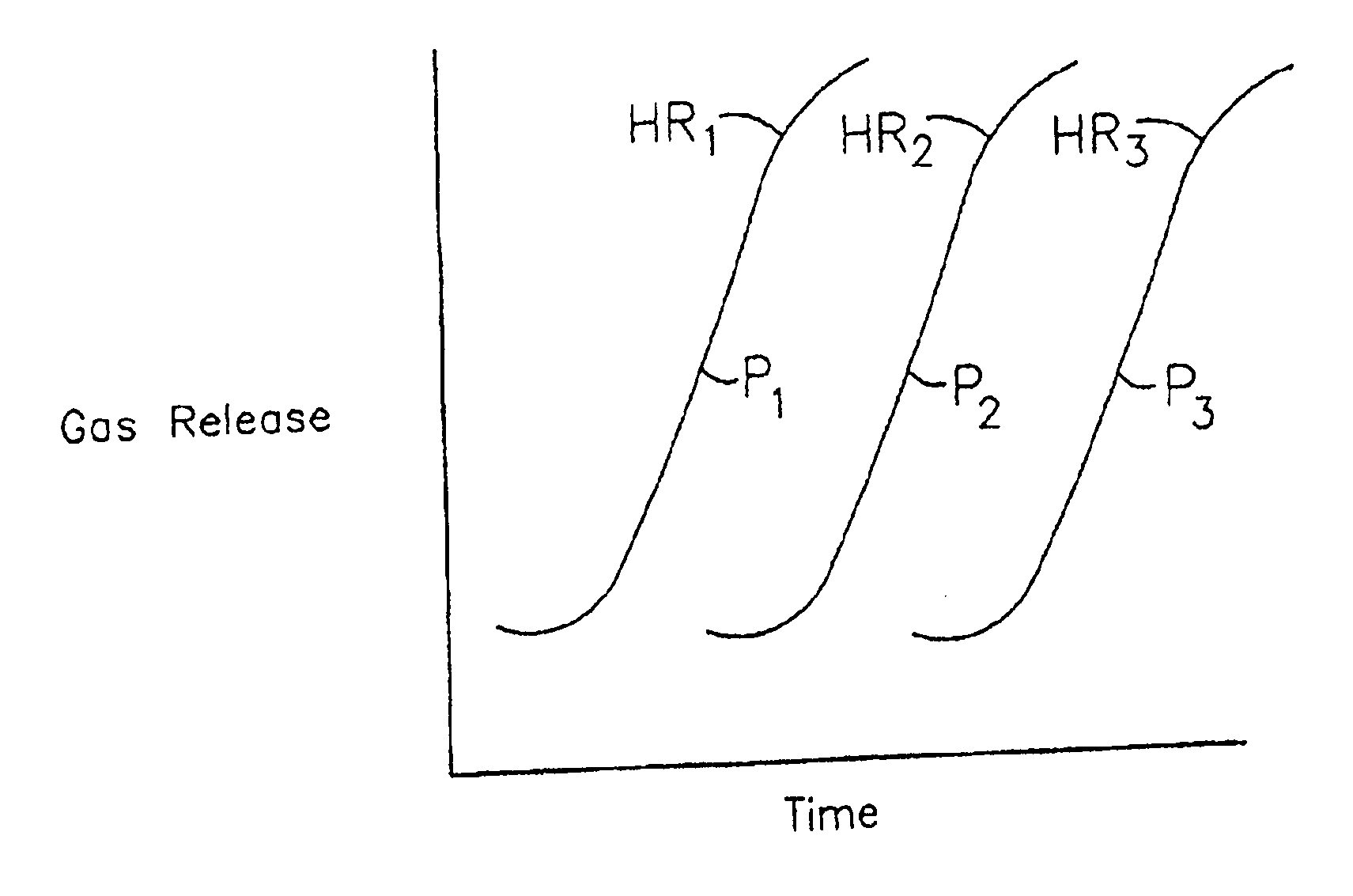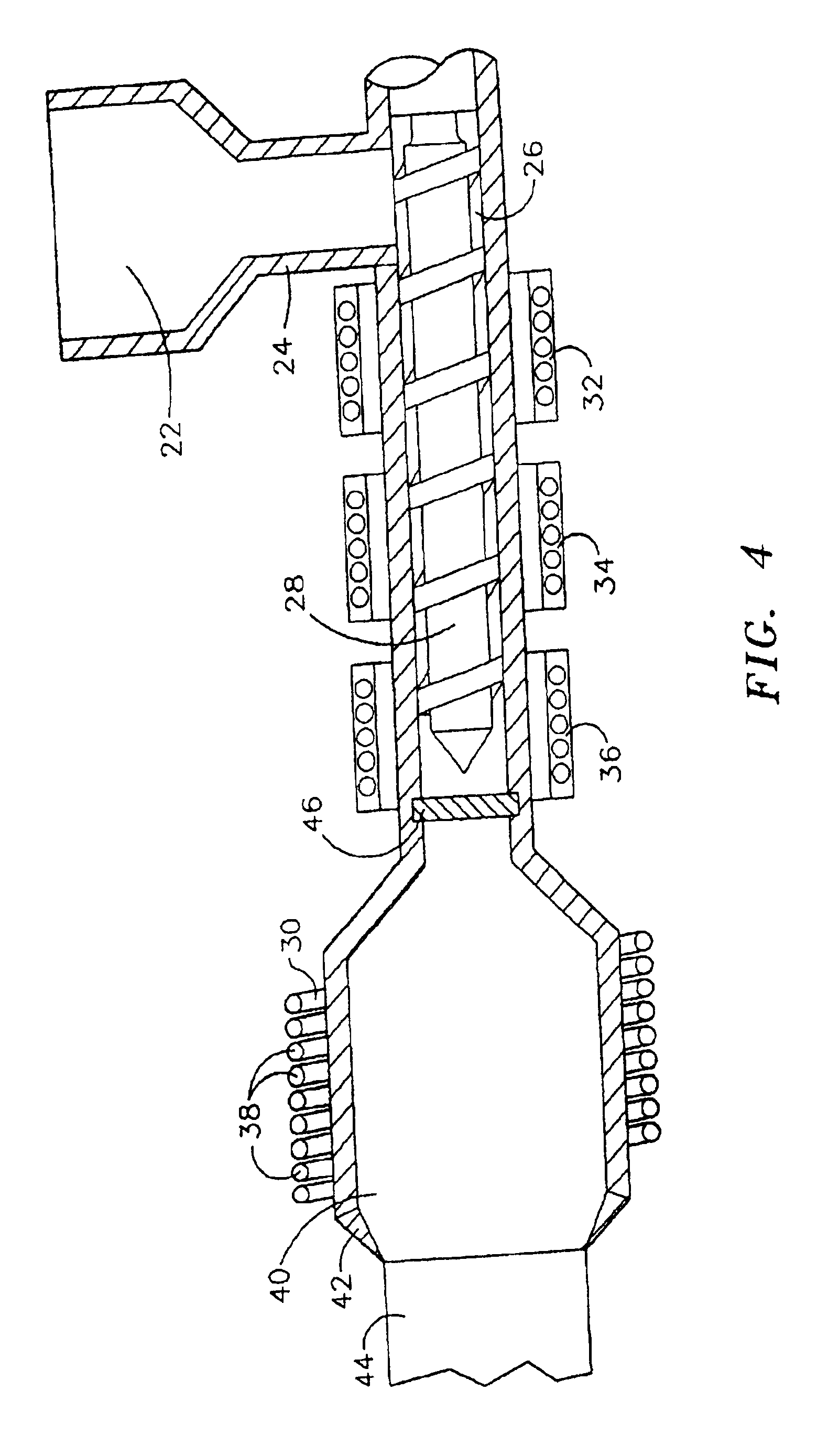Cellular coal products and processes
a technology of cellular coal and products, applied in the field of cellular coal products and processes, can solve the problems of low density, high cost, and inability to take advantage of the property of coal to swell by controlling the swell, and achieve the effect of low cost and low density
- Summary
- Abstract
- Description
- Claims
- Application Information
AI Technical Summary
Benefits of technology
Problems solved by technology
Method used
Image
Examples
example 1
As shown in FIG. 2, a layer 10 of comminuted bituminous coal having a free swell index of about 4 and ground to a particle size of about -60 mesh and about 2 inch deep is deposited in mold 12 equipped with a cover 16. Mold 12 is assembled from three individual pieces carbon or tool steel pieces, sides 12A and 12B and bottom 12C, all joined together by bolts 11 and lined with a ceramic glaze or spray applied ceramic lining 13. Cover 16 includes a similar interior ceramic lining 15 and is attached to sides 12A and 12B with bolts 17 in the final assembly prior to heating. Gaskets 19 are preferably used to insure a tight fit of cover 16 onto sides 12A and 12B. Cover 16 is optionally equipped with a sintered vent plug 20 to permit purging of the interior of mold 12 with non-oxidizing gas. This configuration, incorporating valve 20 also permits pressurization, if desired to control expansion speed and / or pore size in the final product as described hereinabove. Nitrogen gas is repeatedly i...
example 2
The application of the process of the present invention in an extrusion process is depicted in FIG. 4. As shown in that figure, comminuted bituminous coal 22 of a particle size of about -80 mesh is introduced via hopper 24 into chamber 26 equipped with auger 28 that moves particulate coal 18 through chamber 26 and into expansion chamber 30. Chamber 26 is heated by means of a series of barrel heaters 32, 34 and 36 to impart a temperature of less than about 300.degree. C. to particulate coal 18 as it approaches and enters expansion chamber 26. As is conventional practice in extrusion, chamber 26 is divided into a feed section, a compression section and a metering section each defied roughly by the location of barrel heaters 32, 34 and 36 and imparted by the tapered shape of auger 28. Expansion chamber 30 is maintained under a non-oxidizing atmosphere and at a temperature of about 450.degree. C. by means of barrel beater 38. Particulate coal 18 expands within chamber 26 to form expande...
PUM
| Property | Measurement | Unit |
|---|---|---|
| density | aaaaa | aaaaa |
| pressure | aaaaa | aaaaa |
| free swell index | aaaaa | aaaaa |
Abstract
Description
Claims
Application Information
 Login to View More
Login to View More - R&D
- Intellectual Property
- Life Sciences
- Materials
- Tech Scout
- Unparalleled Data Quality
- Higher Quality Content
- 60% Fewer Hallucinations
Browse by: Latest US Patents, China's latest patents, Technical Efficacy Thesaurus, Application Domain, Technology Topic, Popular Technical Reports.
© 2025 PatSnap. All rights reserved.Legal|Privacy policy|Modern Slavery Act Transparency Statement|Sitemap|About US| Contact US: help@patsnap.com



